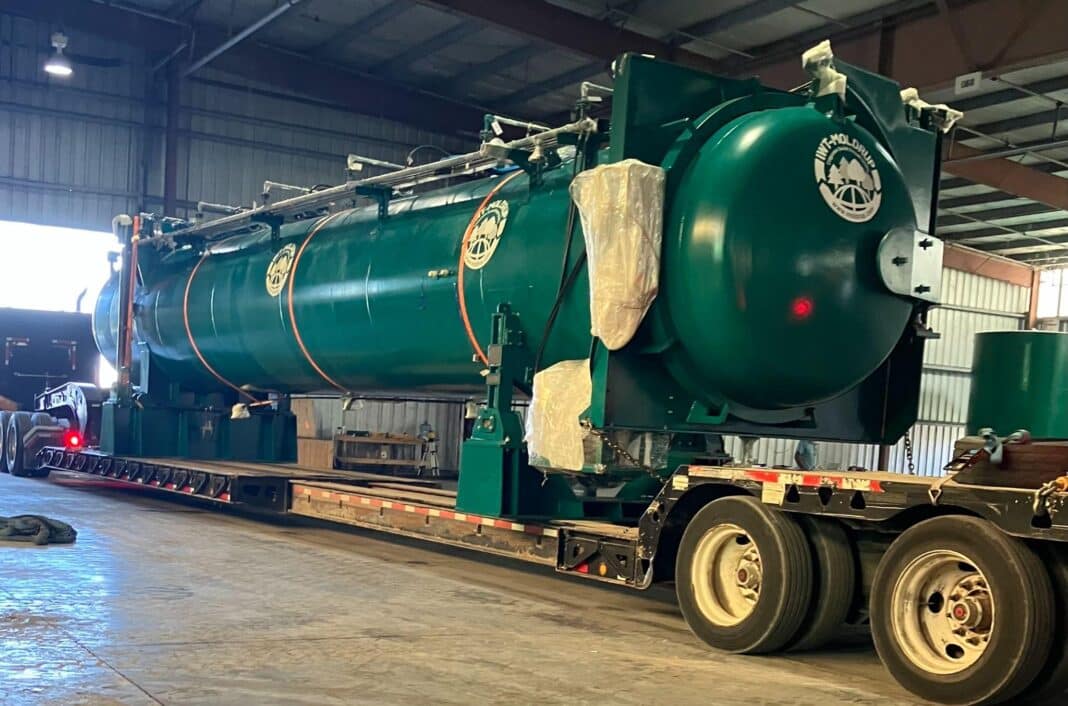The first hydro-thermal CCA turnkey plant with integrated, fully automatic and safe one-person operational material handling has been commissioned at a hardwood and softwood sawmill in Louisiana, USA.
” We have taken a giant leap forward in modern timber impregnation with the delivery of a hydro-thermal system by Danish wood treatment specialist IWT-Moldrum,” LeMoyen Mill and Timber sawmill manager André Herpin enthused.
The plant, equipped to work with several water-borne preservatives, including an automatic flushing and cleaning system, was up and running one week after delivery.
” The process can treat 2590 cubic metres each cycle using just one plant operator,” André Herpin said.
IWT-Moldrum is a third-generation company with more than 1200 plants worldwide and factories in Europe and Asia.
The company has experience treating CCA to creosote, creosote replacement products to wood modification and drying kilns varying in design to various wood preservatives and species.
The Moldrup process is carried out inside a pressure vessel using super-heated steam with a pressure between 14.5-175 psi. The steam pressure varies during the process according to a pre-programmed schedule and ensures that the timber’s moisture content never falls below 4%.
“Hydro-thermal treatment plants were introduced industrially by Moldrup 22 years ago,” CEO Lone Moldrup said.
“The process occurs in an autoclave under vacuum and high vapour pressure. This has advantages over conventional thermos-treatment systems working in open systems, without vacuum, and / or without pressure.”
Thermally-treated wood improves dimensional stability by 30-50% and protects against attack by rot and fungi and most wood insects.
“This gives the wood a warm brown colour,” Lone Moldrup said.
“It’s treated without chemicals or biocides and improves the heat-insulation effect by 5-15%.”
Thermal treatment removes part of the hemicellulose and other wood substances by heating it to 160-230 degrees celsius in an open or closed process, without or with vapour pressure.






